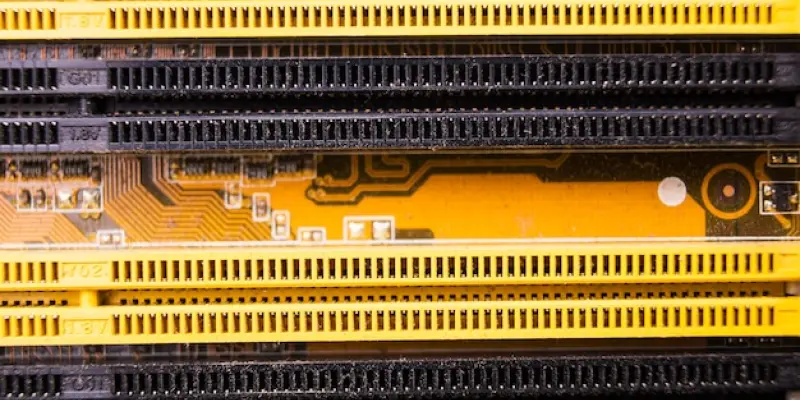In a remarkable development within the realm of custom PC building, a user named Faerco has constructed a personal computer with an eye-popping 1,000 GB of RAM. This feat shifts away from typical gaming PC setups, which usually incorporate between 16 to 32 GB of RAM. instead, Faerco’s build caters to demanding tasks involving the handling of LiDAR data and industrial interference studies. LiDAR, or Laser Imaging Detection and Ranging, is an advanced remote sensing method that uses laser light to produce precise, comprehensive environmental models. This shift in focus from gaming to purpose-driven high-capacity systems is creating waves in industries where the precision and speed of data processing are of utmost importance.
Advances in Specialized Computing Needs
The Role of High-Capacity RAM in Industry
The high-performance machine assembled by Faerco plays a critical role in industries tasked with digital simulations where precision is crucial. He has pointed out the significance of processing technology that can achieve spatial accuracy of up to 1/16th of an inch. Such meticulous accuracy ensures that potential errors are avoided during project execution. For instance, in construction or manufacturing, accurately determining the feasibility of fitting large components through constrained spaces or making structural changes without physical trial-and-error becomes vital. The immense computing power provided by 1,000 GB of RAM thus becomes indispensable for efficiently handling and processing large datasets associated with such projects.
However, the sheer capability and power of this configuration come at a considerable financial cost, comparable to purchasing a new vehicle. Faerco’s investment highlights a growing inclination towards specialized computing systems that can be meticulously tailored for industry-focused tasks. While this technology still seems distant for some, many in specialized sectors see it as a crucial enabler of efficiency and accuracy in their workflow processes. Such investment is perceived not just in terms of hardware but also as a commitment to innovation and future-readiness.
Bridging the Gap Between Hardware and Software
While the development of such sophisticated hardware with 1,000 GB of RAM heralds a new era in technological achievement, it has shed light on the existing gap between hardware capabilities and current-day software applications. Faerco’s configuration epitomizes this divide, as not all current software tools are designed to harness or require such raw processing power. For example, FARO Scene, a software used in 3D visualization, finds challenges in optimizing performance on a machine of this caliber. This scenario underlines a technological frontier where hardware capabilities outpace the software designed to use them.
Despite this mismatch, the gap between hardware capacity and software capability is gradually closing as software evolves to catch up with hardware advancements. This ongoing progression holds promise, suggesting an eventual alignment where software can fully take advantage of the extraordinary power available, thus transforming how complex computational tasks are approached. As developers innovate to meet these demands, the potential for specialized machines like Faerco’s to become more commonplace in solving intricate problems will likely unfold over the next few years.
The Potential for Mainstream Integration
Innovations Driving Industry Trends
The presence of a system with 1,000 GB of RAM signifies a broader trend within the technology sector oriented toward leveraging unprecedented computing power to address complex challenges. Faerco’s custom build not only highlights the current capacity of high-performance computing but also serves as an embodiment of the innovative drive that shapes modern technology landscapes. The versatility and robust nature of such potent machines enable them to flexibly address a wide array of industry-specific applications beyond what current market standards suggest. As the technology industry continues its relentless pursuit of advancement, it’s becoming increasingly apparent that such computing capabilities will gradually mainstream. This transition is driven by technological trends inclining towards utilizing advanced computing setups in fields ranging from 3D modeling to data-intensive research environments, where accuracy and speed remain paramount. The spread of these processes into more sectors is facilitated by the ongoing evolution and integration of software tools that can fully exploit the vast computing power inherent in a setup like Faerco’s.
Preparing for a Future of High-Performance Machines
In an impressive advancement in the field of custom PC assembly, a user known as Faerco has successfully built a computer featuring an astonishing 1,000 GB of RAM. This groundbreaking achievement marks a significant departure from conventional gaming PC configurations, which typically utilize a memory range of 16 to 32 GB of RAM. Rather than focusing on gaming entertainment, Faerco’s ambitious build is designed to handle complex and demanding tasks, specifically focusing on LiDAR data processing and industrial interference analysis. LiDAR, which stands for Laser Imaging Detection and Ranging, uses laser technology to create highly detailed and accurate environmental models, playing a crucial role in modern remote sensing applications. This transformation from gaming-centric to high-capacity, purpose-driven systems is making a considerable impact in industries where processing data quickly and accurately is essential. It’s a notable shift that emphasizes the growing need for PCs capable of handling extensive and precise data analysis.

